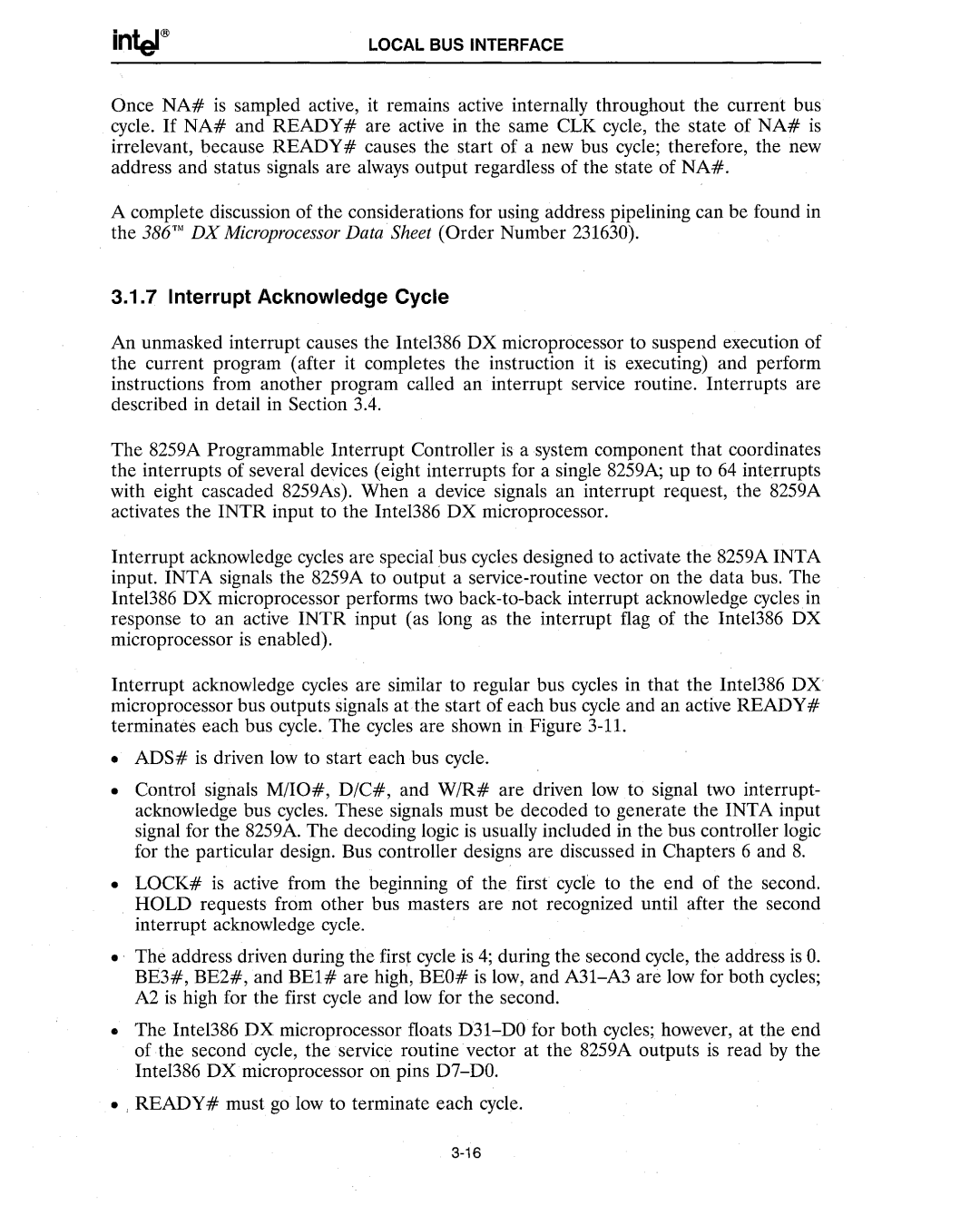
LOCAL BUS INTERFACE
Once NA# is sampled active, it remains active internally throughout the current bus cycle. If NA# and READY# are active in the same CLK cycle, the state of NA# is irrelevant, because READY# causes the start of a new bus cycle; therefore, the new address and status signals are always output regardless of the state of NA#.
A complete discussion of the considerations for using address pipelining can be found in the 386'" DX Microprocessor Data Sheet (Order Number 231630).
3.1.7 Interrupt Acknowledge Cycle
An unmasked interrupt causes the Intel386 DX microprocessor to suspend execution of the current program (after it completes the instruction it is executing) and perform instructions from another program called an interrupt service routine. Interrupts are described in detail in Section 3.4.
The 8259A Programmable Interrupt Controller is a system component that coordinates the interrupts of several devices (eight interrupts for a single 8259A; up to 64 interrupts with eight cascaded 8259As). When a device signals an interrupt request, the 8259A activates the INTR input to the Inte1386 DX microprocessor.
Interrupt acknowledge cycles are special bus cycles designed to activate the 8259A INTA input. INTA signals the 8259A to output a
Interrupt acknowledge cycles are similar to regular bus cycles in that the Intel386 DX microprocessor bus outputs signals atthe start of each bus cycle and an active READY# terminates each bus cycle. The cycles are shown in Figure
•ADS# is driven low to start each bus cycle.
•Control signals M/IO#, D/C#, and W/R# are driven low to signal two interrupt- acknowledge bus cycles. These signals must be decoded to generate the INTA input signal for the 8259A. The decoding logic is usually included in the bus controller logic for the particular design. Bus controller designs are discussed in Chapters 6 and 8.
•LOCK# is active from the beginning of the first cycle to the end of the second. HOLD requests from other bus masters are not recognized until after the second interrupt acknowledge cycle.
•The address driven during the first cycle is 4; during the second cycle, the address is O. BE3#, BE2#, and BE1# are high, BEO# is low, and
•The Intel386 DX microprocessor floats
•, READY# must go low to terminate each cycle.
